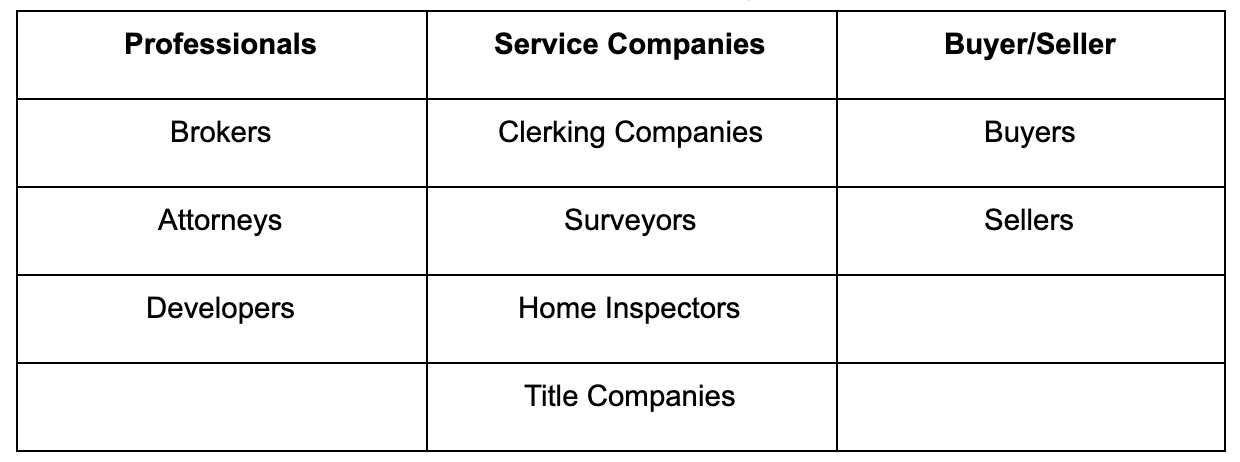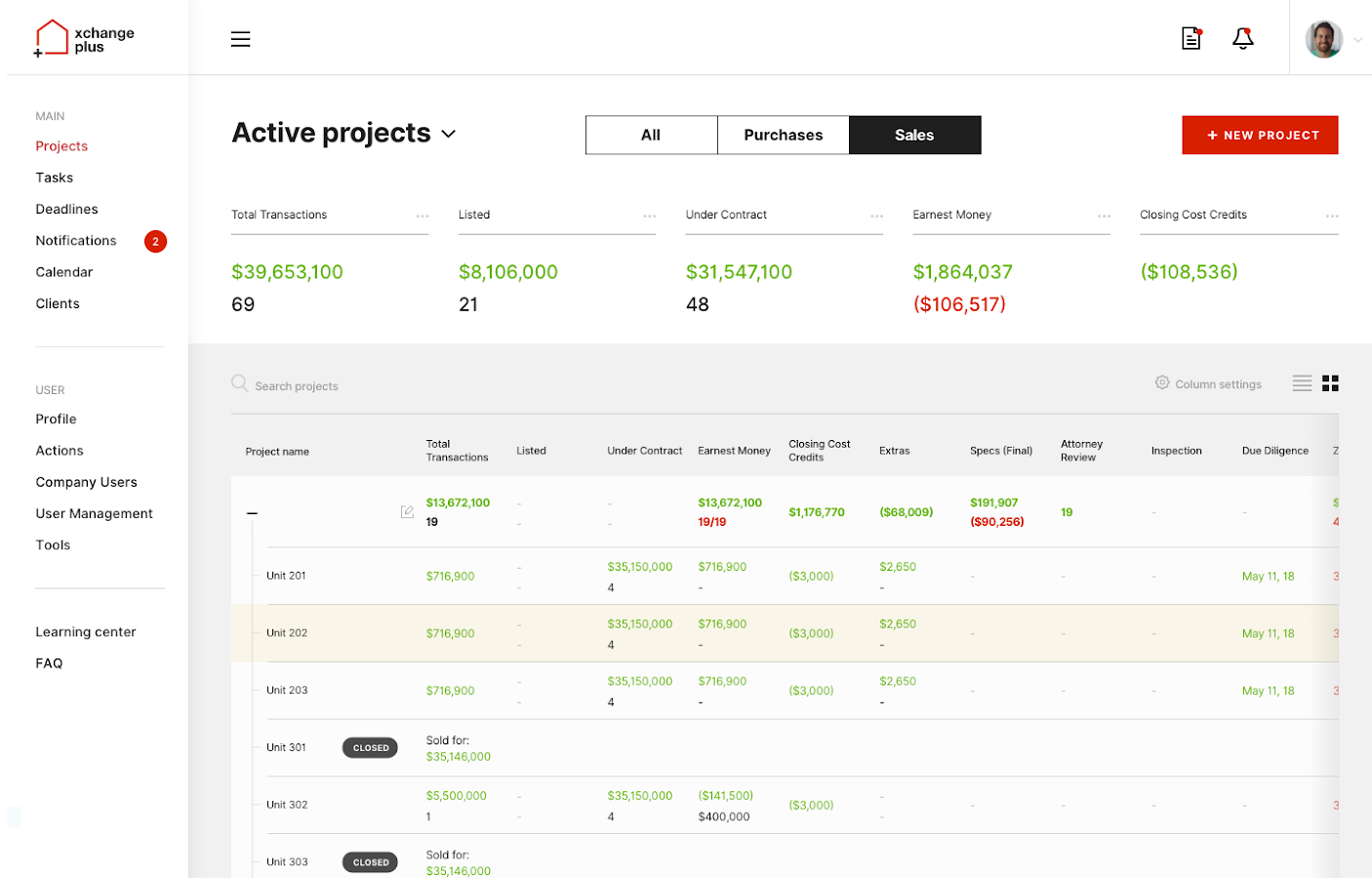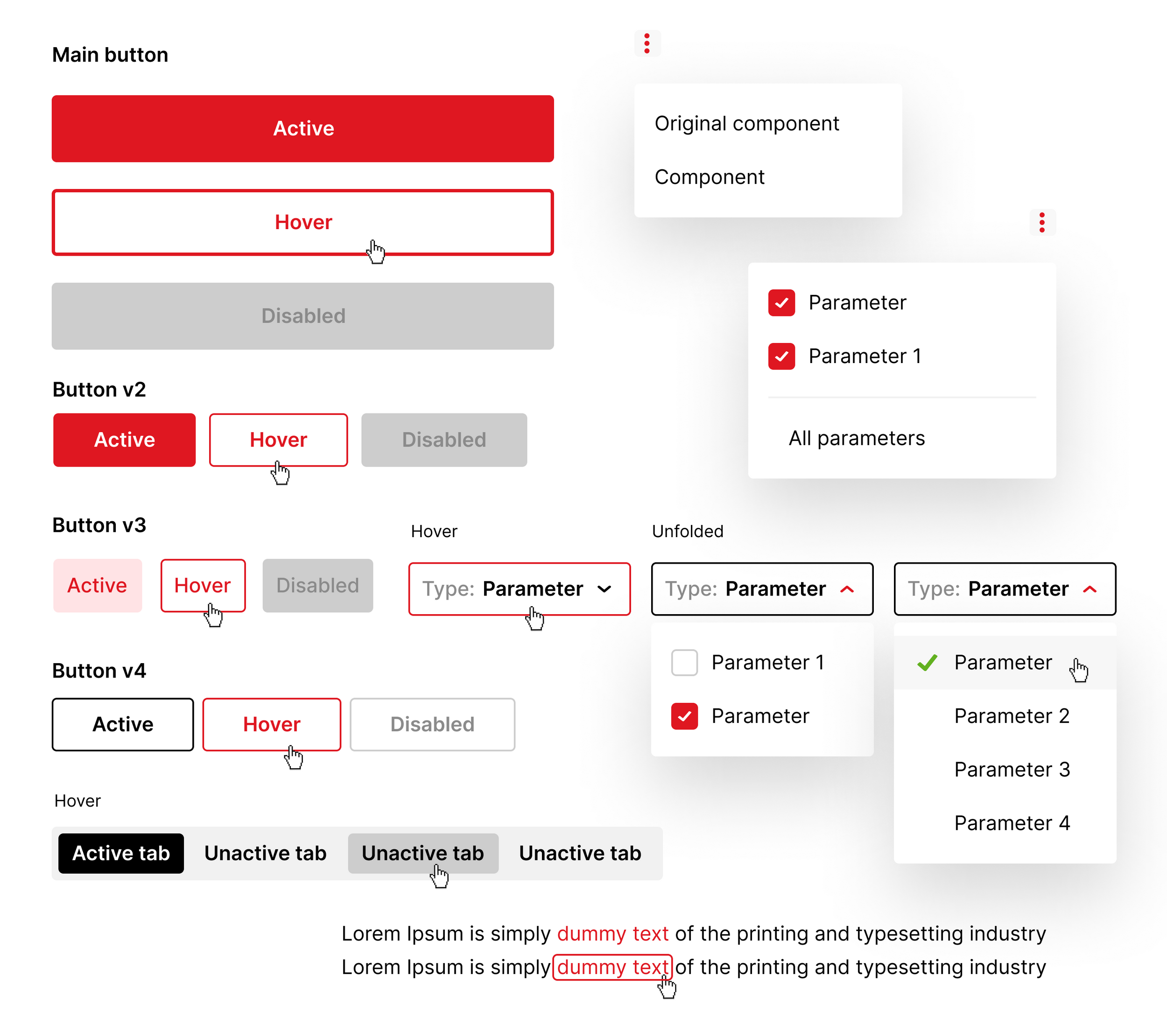XCHANGEPLUS
The real estate marketplace is unstructured and unnecessarily complex. The overabundance of tools and transaction management solutions overcomplicate an already convoluted process.
Our solution- a centralized platform for all residential real estate transaction participants (buyers, sellers, lenders, service providers, attorneys, developers, and brokers). XchangePlus is a one-stop document and data exchange platform that automates the transaction process from contract to closing.
Role —UX Lead
View —Website
Lack of efficiency in the real estate industry is widely recognized as a massive problem. Part of this may be explained by the messiness and obscurity of the data, the complexity of the transaction process, and the diversity of the players.
What is XchangePlus (XP) and who is it for?
The XP software encompasses transaction management, data processing, backoffice servicing, and vendor networking, all in one platform. Offering a fully automated contract-to-closing software based service that streamlines the transaction for all parties involved.
The structural inefficiencies cannot be optimized without addressing the needs of every professional involved in a transaction.
The UI overlooks the strategic nature of UX
Beginning in 2018 I worked with a small team—one researcher, CEO (led product), and 2 software developers—to produce a platform with a better user experience. Our objective was to improve the data curation process to save time and money, without sacrificing quality in the data being presented. The XP MVP had already been deployed and was being used actively by beta users, the goal- not to sacrifice the overall structure and strategic approach of showcasing data .
As with any design process, we began by conducting research—qualitative surveys of our users and analyzing user data. We sought to understand exactly what data hierarchy needs to be established.
We collected data from a subset of diverse beta users representing all major transaction participants, including a law firm and a real estate developer. All beta users had shifted their entire workloads onto XP and used it to transact their day-to-day business.
To address the needs of each and every transaction participant, we divided users into three classes. Each class is addressed separately.

Individual users face unique challenges and inefficiencies. However, it is still possible to identify common problems for each group:

What XP needs to do

We realized we needed a way to teach people how to work with a large number of files effectively and how to streamline communication channels. Because our aim is to allow anyone to take control of their real estate business, it was necessary to provide all of the features and tools a user might possibly need to conduct their transaction. Automated processes allow nonprofessionals to manage their own projects without having much experience or outside guidance

The Dashboard before:
Inspired by the framework of electronic trading platforms utilized by the finance industry, the XchangePlus team created a unique portfolio view that allows users to survey the entirety of their business from one screen. The team did not want the portfolio view to be changed.
Each transaction is further sorted into three gradated layers, which provide a general overview, project overview, and individual transaction data, which expand into further detail when a user clicks them leading to the workspace ↓.

After initial brainstorming, and sketching we began to develop a keen understanding of how our tools would need to work, as well as how we might build a scalable platform for managing and delegating tasks across teams. I worked with the CEO and dev team to understand constraints. Because of early deadlines, we needed to optimize the product in way that was easy for dev to implement and effective in enhancing the usability of the product.
Because each task is often unique to participants, we needed to enable things like customizing the dashboard portfolio view, communication of tasks and deadlines, and edit document files. We learned through user feedback and research that giving users control of their workflow—to meet their preferences, as well as functional specialties—would enable faster and more efficient work. As a result, we were able to develop a work flow for users to quickly and efficiently sort and curate data rapidly at-scale.
As part of our process we needed a clear way to see what the flow might look like across use-cases and how all of our controls could work together.
Shown ↓: Customize table settings to view specific data

To help the team understand the proposed designs and interactions, I worked in Principle to build a mid-fidelity, comprehensive, end-to-end prototype of our dashboard. This way we were able to recieve rapid feedback and were able to iterate changes on-the-spot. Since then we have used prototypes at XP to help propel design decisions and communicate designs with product and dev teams.
Design Guidelines
Our goal was to rapidly improve the velocity with which the dev team at XchangePlus build, in addition to creating a shared design language around software for future teams to leverage-- XP components were later used in MyBrokerTools software.
We created a style guide to unify the XP software --> later evolved into XchangePlus DS
Everything from typography and color, to buttons, flags (or toasts), banners, dialogs, illustration guidelines, list views, switches, badges, and more were designed over the span of just a few months.

The most difficult challenge for the task was taking patterns from XP that were never intended to work on mobile and evolving them without sacrificing the data shown. To solve this problem we approached each component carefully, considering how the dev team determined standards for their guidelines while also looking at mobile conventions and optimal user experience.
We wanted to ensure that users could have a seemless experience when, for example, needing to check one last thing on their walk to a closing from their car.

Xchangeplus Frames






